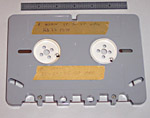Richard L. Hess
|
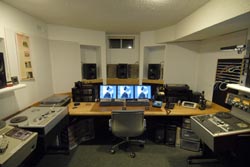 Click here to return to www.richardhess.com |
| Richard L. Hess
Contact Information—How to get your tape restored |
|
|
We provide high-quality transfers/copies
|
| Check out our blog (click here) for a wide variety of information. |
|
Tape navigation: Home | Tips & Notes | History | Formats & Resources | Projects | Facility | Contact
On this page: Top | Source Formats | Playback Capabilities Processing capabilities and output formats | Notes and other information |
||
| Client Comments | ||
I do not think that I could have found a better person than Richard for the transcription job. We think you have done a masterly job and we are so happy. Our profoundest thanks for your care in restoring and archiving these precious recordings for us. — Margaret and Leslie Huggett after digitizing master tapes of all their albums, including several produced by George Martin. The project included 22 different tape lots, representing much of their career. I was thrilled with what Richard was able to do - for sure, he is the one to contact. He displayed great care and knowledge and completed our project on schedule. His work absolutely surpassed my hopes. — Aaron Wow. I didn't realize those four guys who got together years ago to drink beer and sing had any talent. Thanks for bringing out the best in what we did! I greatly appreciate the great work you did. — Peter Anderson |
Thanks so much for your hard and diligent work on the Stan Rogers transfers. They sound fantastic! Iím very excited about this project and I really value your part in it. This sounds superb. Much better than I ever could have anticipated.
Thank you! Also, you should realize that this is an important
recording. We are thrilled you were able to capture it. |
|
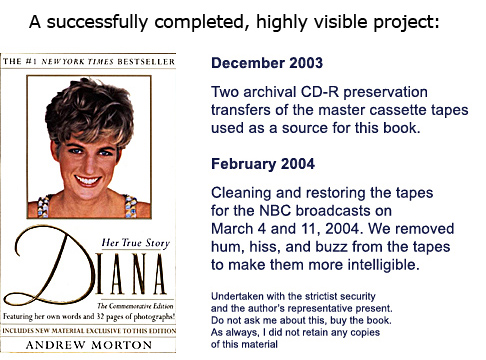
|
||
I received the CDs today. The sound result on the CDs far exceeds my expectations. I am tremendously moved at the quality and accomplishment of safely digitizing some tapes that have survived my chaotic life for 30 years. Thanks so much. — Sumner Nelson |
||
| Please contact us for your special needs. | ||
|
Tape navigation: Home | Tips & Notes | History | Formats & Resources | Projects | Facility | Contact
On this page: Top | Source Formats | Playback Capabilities Processing capabilities and output formats | Notes and other information |
||
|
Source formats 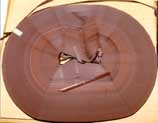
We successfully played
We have played paper
We frequently play RCA Sound Tapes and other cartridge/cassette formats.
|
Digital Formats See the next section for even more detail on noise reduction
and variations on the theme. |
|
|
Tape navigation: Home | Tips & Notes | History | Formats & Resources | Projects | Facility | Contact
On this page: Top | Source Formats | Playback Capabilities Processing capabilities and output formats | Notes and other information |
||
|
Playback capabilities 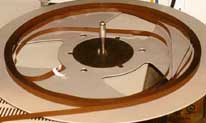
We played both the
|
UPDATED (and downsized) 2024-10-26 8-track cartridges—For best results, we remove
the tape from the cartridge and play it on a special head assembly for
the APR-5003V machines. We have an Akai CR-80D-SS four-channel 8-track
recorder/player so we can play both stereo and quadraphonic 8-tracks,
but the results do not match the reel to reel.
Tape types * While we have the listed quantity of these hardware noise reduction
units, we generally use a variety of dedicated plugins as they offer
a more stable and consistent decoding option without sacrificing quality. For cassettes and other 0.150-inch-wide tape, nominal playback is 1-7/8 in/s in the Nakamichi Dragons. Our DATATAPE CMS 1044 players run at 15/32, 15/16, 1-7/8, 3-3/4, and 7-1/2 in/s and with varispeed can cover the range from 15/32 to 11-1/4 in/s For reels, we have the following native speed capabilities: |
|
|
Tape navigation: Home | Tips & Notes | History | Formats & Resources | Projects | Facility | Contact
On this page: Top | Source Formats | Playback Capabilities Processing capabilities and output formats | Notes and other information |
||
|
Processing capabilities and output formats 
We turned this into a CD-R!
|
|
|
|
Tape navigation: Home | Tips & Notes | History | Formats & Resources | Projects | Facility | Contact
On this page: Top | Source Formats | Playback Capabilities Processing capabilities and output formats | Notes and other information |
||
|
Resources 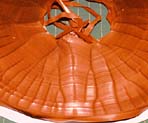
This one was a bit tougher,
|
Background and other useful information . . . Click here for how to contact us. My July-August 2001 article in the Journal of the Audio Engineering Society concerning restoration of some of the oldest tapes in the U.S. is available on the AES Web site in Adobe PDF format. This work was funded in part by a Grammy Grant. A partial list of the projects that we have undertaken. A compilation of tape restoration and handling tips and notes. A glimpse of the Facility that I use. This might be a starting point for other restoration activities. A listing of many media formats and resources to assist in preservation. |
|
|
Background Information Since the beginning of recorded sound, there has been little attention paid to the archival nature of recording. We have been fortunate that many of the formats have retained their information reasonably well over the last hundred years or so. However, if we are going to maintain this information indefinitely, many of us in the archival community believe that the only way this will happen is if we convert the recordings to digital data and then manage that data in an active fashion like other digital data. The data will need to be migrated from one carrier to another as time goes on. Being digital, these migrations will be transparent. One of the great challenges is creating digital files that are accurate representations of the original analog recordings. This sub-section of my Web site is devoted to this responsibility and my involvement with it. There are estimates that over 50,000,000 hours of recordings have been made in the world to date. Few of these can realistically be expected to survive for another 100 years. The equipment to play them will be even harder to obtain in 100 years, so while the carrier and its information may survive, we will not be able to confirm its survival because we will not be able to play it. Even if we figure out how to play it, the infrastructure to do so in a high-quality manner will not be available. Where would you get accurate test tapes? Where would you get replacement parts for the old machines or figure out all the nuances that an Ampex, Nagra, Sony, or Studer figured out? The legacy of formats and configurations and companding technology is daunting for quarter-inch tape, not to mention the other tape widths. Now is the time to start making the transition. Yesterday would have been good, too. Tomorrow may be too late. It has been estimated that the Library of Congress will require 400 PERSON YEARS to migrate their holdings into a digital format. I do restoration, but more importantly, I hope that I am a spokesperson for creating policy to cause more restoration to be undertaken. It is not a job any one person or one company can complete alone. It is an industry-wide, world-wide challenge. Many of the recordings that are in danger of disappearing are important cultural records of civilizations that may no longer exist in the forms they did when they were recorded. Anything said here for audio is even more important, and more daunting, for video records. From 1974-2004, I was professionally involved with audio and video systems design first with ABC-TV in New York, then McCurdy Radio in Toronto, and from 1983-2004 with National TeleConsultants in Glendale, CA. I now restore audio recordings because I enjoy it, am good at it, and it needs to be done. |
||
|
Tape navigation: Home | Tips & Notes | History | Formats & Resources | Projects | Facility | Contact
On this page: Top | Source Formats | Playback Capabilities Processing capabilities and output formats | Notes and other information If you're here because of a disaster such as: Flood, Fire, or Erasure please click here for more information Broadcast Engineering Pages | Photo Pages | Richard Hess's Home Page ©2002-2024Richard L. Hess All rights reserved. Return to Site home page |
||
